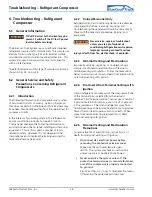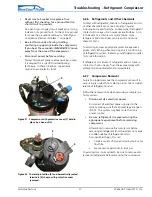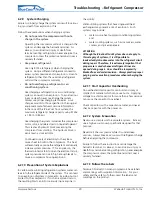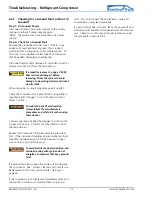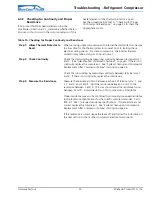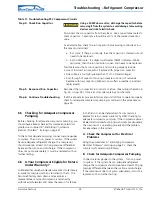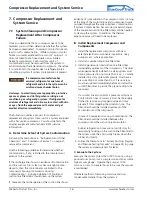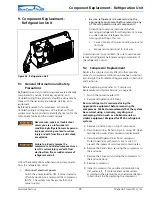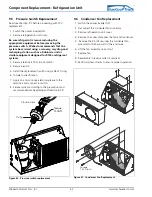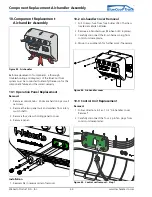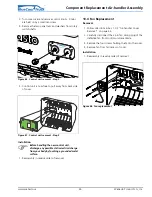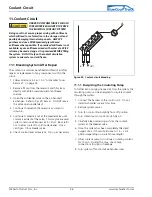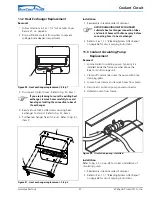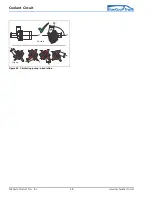
Troubleshooting – Refrigerant Compressor
www.webasto.us
35
Webasto Product N.A., Inc.
™
6.5
Checking for Adequate Compressor
Pumping
Before checking for adequate compressor pumping, you
should have already checked for compressor electrical
problems as outlined in “Identifying Compressor
Electrical Problems” starting on page 31.
To check for adequate pumping, connect service gauges
to system. Then turn on power to system. If the system
has an adequate refrigerant charge, the compressor
should maintain at least 200 psig pressure differential
between the suction and discharge. If the compressor
does not pump adequately, it must be replaced with no
further testing.
6.6
Is Your Compressor Eligible for Return
Under Warranty?
Authorized Tecumseh wholesalers are asked to test every
in-warranty compressor that is returned to them. The
Tecumseh factory tears down and examines a
representative sample of compressors returned by
authorized wholesalers and notes the reason for failure.
In the field, it can be determined if a compressor is
eligible for return under warranty by FIRST checking for
adequate compressor pumping. If the compressor passes
all electrical troubleshooting tests and pumps adequately,
the compressor is operating properly and the problem
lies elsewhere in the system.
A. Check the Compressor for Electrical
Problems
Using the procedures in “Identifying Compressor
Electrical Problems” starting on page 31, check the
compressor for electrical problems.
B. Check for Adequate Compressor Pumping
Connect services gauges to the system. Turn on power
to system. If the system has an adequate refrigerant
charge, the compressor should maintain at least 200 psig
pressure differential between the suction and discharge.
If the compressor does not pump adequately, it must be
replaced with no further testing.
Step 4: Check Run Capacitor
Using a 20,000 ohm resistor; discharge the capacitor before
removing it from the system to avoid damage to measuring
devices and risk of electric shock.
Disconnect the run capacitor from the system. Use a capacitance meter to
check capacitor. Capacitance should be ±10% of the marked capacitor
value.
As an alternative, check the run capacitor by measuring continuity across
the capacitor terminals:
a. Rx1 scale: If there is continuity, then the capacitor is shorted out and
needs to be replaced.
b. Rx100,000 scale: If a digital multi-meter (DMM) indicates infinite
resistance, then the run capacitor is open and needs to be replaced.
Possible reasons that a run capacitor is not working properly include:
• Use of incorrect run capacitor. Replace with proper run capacitor.
• Line voltage is too high (greater than 110% of rated voltage).
• Rust-through of capacitor housing or severe corrosion of terminals.
Replace with new capacitor (Webasto now offers a weather protected
replacement).
Step 5: Reconnect Run Capacitor
Reconnect the run capacitor into circuit as before. (See wiring schematic in
Fig. 35, on pg. 38.) Observe color code markings on schematic.
Step 6: Continue Troubleshooting
If all the above tests prove satisfactory and unit still fails to operate properly,
check for adequate compressor pumping as outlined in the procedure on
page 35.
Table 11. Troubleshooting PSC Compressor Circuits
CAUTION






